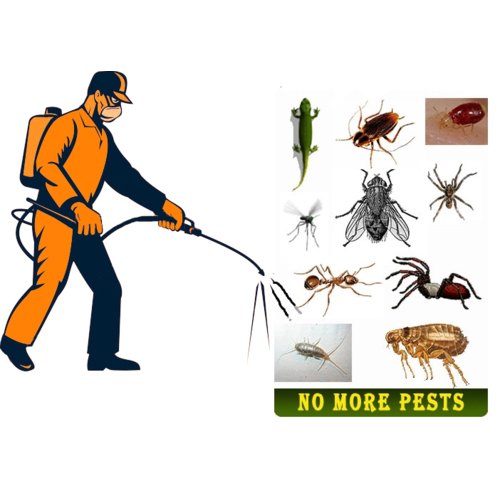Checking Out Problem and Treatment Strategies on the planet of Insect Control
The landscape of pest control includes a myriad of difficulties, specifically as problems of typical house insects remain to advance. Recognizing the actions and reproductive patterns of these annoyances is important for developing efficient treatment methods. By integrating safety nets with advanced administration strategies, such as Integrated Parasite Administration (IPM), house owners can much better protect their settings. The efficiency of these techniques might vary significantly based on particular conditions. What hidden variables add to the success or failure of these techniques in different setups?

Usual Home Vermin
When it comes to handling our home, recognizing typical house bugs is crucial. These bugs not just disrupt our comfort yet can additionally pose health and wellness dangers and damage building. The most common house insects consist of ants, roaches, rats, termites, and bed bugs.
Ants, commonly seen foraging in kitchens, can contaminate food and develop big nests. Roaches, known for their durability, can cause allergic reactions and spread microorganisms. Rats, including computer mice and rats, can trigger structural damages and carry diseases like hantavirus and salmonella. Termites, often described as "quiet destroyers," can endanger the integrity of wood frameworks, resulting in expensive repairs. Bed bugs, although not disease providers, can trigger significant pain through their attacks and result in psychological distress.
Identifying the signs of these pests, such as droppings, nests, or bite marks, is important for very early treatment (Pest Control Lockhart). Proper cleanliness practices, sealing access factors, and maintaining a clutter-free environment work preventative steps. By determining these typical home bugs and comprehending their actions, house owners can take proactive actions to mitigate infestations, making sure a much healthier living atmosphere
Understanding Pest Infestations
Parasite invasions can rise quickly, transforming a minor aggravation into a considerable problem if not dealt with promptly. Understanding the nature of these invasions is critical for effective management. Parasites can invade property and business areas for numerous reasons, including the look for food, shelter, or reproducing premises. Common factors adding to problems include bad cleanliness, structural vulnerabilities, and seasonal adjustments that drive parasites indoors.
Determining the sort of bug is crucial, as different types exhibit diverse behaviors and reproductive prices. As an example, rodents might develop nests in surprise locations while insects like roaches grow in moist environments. Early discovery often pivots on identifying signs such as droppings, gnaw marks, or unusual sounds, which can suggest a trouble prior to it ends up being severe.
Environmental conditions also play a crucial duty in pest expansion. Cozy, damp climates can assist in the fast development of parasite populations, while changes in landscaping or construction can accidentally create conducive environments. Consequently, normal examinations and preventative actions are extremely important to mitigating the threat of infestations. An informed strategy to comprehending these characteristics prepares for efficient pest monitoring approaches in the future.
Therapy Methods and Strategies
Effective treatment techniques and strategies are important for mitigating insect problems and recovering a risk-free setting. A diverse method is typically best, including chemical, biological, and mechanical approaches customized to the certain insect and the intensity of the infestation.
Chemical treatments include using insecticides and herbicides, which can properly eliminate pests. Proper application and adherence to safety and security standards are essential to lessen dangers to human beings and non-target microorganisms. Integrated Bug Monitoring (IPM) urges the sensible use chemicals as a last option, counting instead on monitoring and limit degrees to determine treatment requirements.
Biological control techniques entail presenting all-natural predators or parasites to reduce pest populations. This method is significantly prominent, specifically in farming settings, as it advertises environmental sustainability.
Mechanical techniques, such as traps and obstacles, provide instant remedy for bugs without introducing chemicals. Choices consist of sticky catches for bugs or physical barriers for rodents.
Ultimately, the selection of therapy method need to think about the specific parasite, the setting, and possible influence on human health and ecological communities. A balanced combination of these strategies can properly handle infestations while advertising long-lasting bug control solutions.
Precautionary Steps for Homes
Proactively attending to bug concerns prior to they intensify is essential for maintaining a healthy and check balanced home environment (Pest Control Lockhart). Implementing reliable safety nets can substantially minimize the possibility of invasions, eventually guarding both your building and well-being

Proper landscaping likewise plays an essential function in prevention. Keeping hedges and trees trimmed away from the house reduces the opportunities of pests finding their way indoors. Additionally, ensure that drainage systems are working effectively to avoid standing water, which can reel in mosquitoes and various other bugs.
Lastly, routine examinations are advisable. Routinely checking for indicators of insect activity enables for early intervention. By taking on these safety nets, homeowners can develop a setting that is much less welcoming to pests, thus improving their general lifestyle and minimizing the requirement for comprehensive pest control interventions.
Business Bug Control Techniques
A detailed technique to industrial bug control is crucial for services aiming to preserve a risk-free and hygienic setting. Efficient techniques involve a combination of regular assessments, worker training, and the implementation of Integrated Bug Monitoring (IPM) practices.
Normal evaluations enable very early detection of pest activity, enabling timely intervention. Businesses need to establish a regular timetable for these evaluations, focusing on high-risk areas such as kitchens, storage space spaces, and waste disposal websites. Worker training is equally critical; staff needs to be enlightened on the indications of pest problems and the importance of reporting them instantly.
Carrying out IPM methods assists minimize insect concerns sustainably. This consists of environment modification, such as securing access points and minimizing mess, as well as using natural deterrents before resorting to chemical treatments.

Additionally, teaming up with a licensed pest control copyright guarantees accessibility to professional knowledge and sophisticated therapy options. This collaboration can bring about personalized bug control intends tailored to the details demands of the organization, lessening dangers and boosting overall effectiveness. Inevitably, a positive and educated technique cultivates a pest-free environment, securing look at this now both public health and organization reputation.
Final Thought
In conclusion, efficient insect control requires a comprehensive understanding of typical household pests and their behaviors, coupled with targeted therapy techniques. Implementing preventive steps together with treatment approaches such as Integrated Parasite Management and biological control improves the capability to alleviate infestations. Regular assessments and a mix of chemical and mechanical solutions additionally add to preserving pest-free settings. Ultimately, an all-around strategy to pest monitoring is vital for protecting living areas from unwanted burglars.